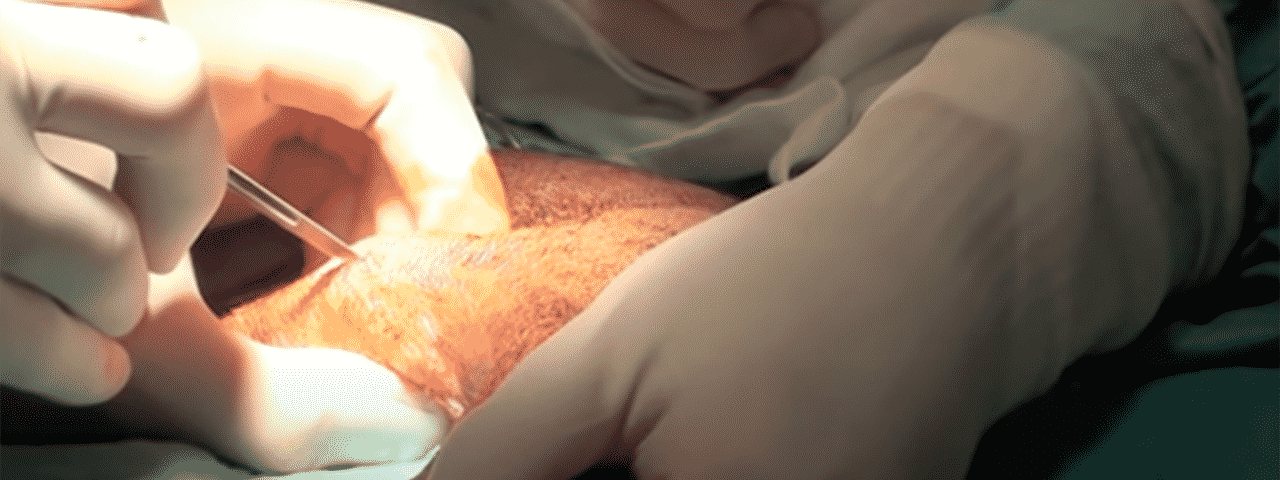We at Vetdojo offer a full range of veterinary courses depending on the areas a vet surgeon wants to specialize in
Dr Charles Kuntz, Specialist Surgeon for VetDojo explains the procedure for lymph node removal and toe amputation on a dog.
The popliteal lymph node is removed in order to determine if there’s evidence of metastasis.
This dog had a melanoma of the nail bed on one of the toes. The lymph node was enlarged so it was removed to:
1) confirm whether or not there was metastasis and
2) help control the tumour if it has gone into the lymph node
How to perform a toe amputation on a dog
An incision is made in the skin just over the exteriorised popliteal lymph node. This is similar to the exposure of a testicle during a castration.
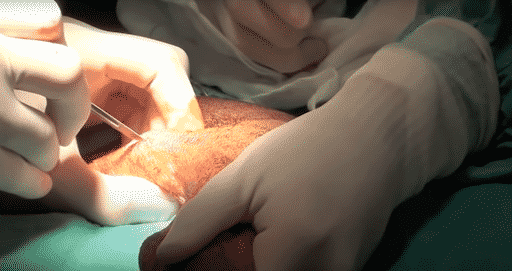
The lymph node is grasped using a right-angle forceps at its base. Prior to this, the right-angle forceps is used for blunt dissection.
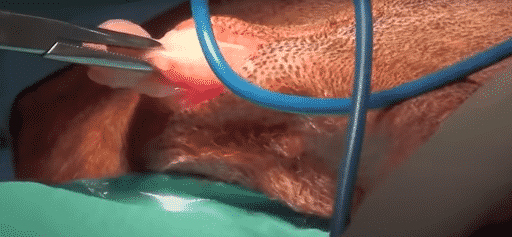
The stalk of the popliteal lymph node is then transected using electrocautery in COAG mode.
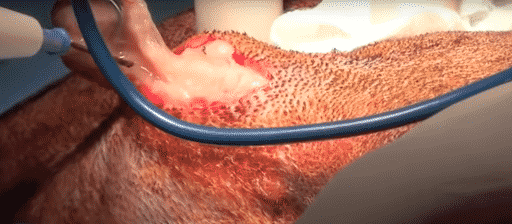
After the lymph node is removed, electrocautery is used to provide haemostasis from cutaneous bleeders.
Subcutaneous tissues are closed using 3-0 PDS in a simple continuous pattern.
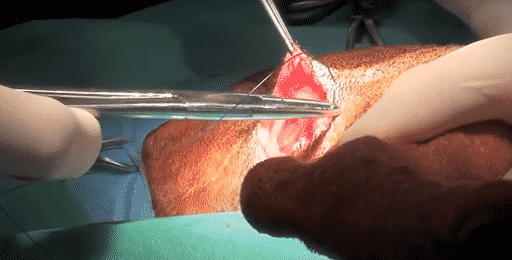
A 3-0 PDS suture is then used in an intradermal pattern in order to close the skin.
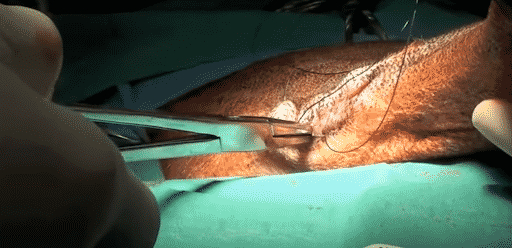
For the toe amputation, an Esmarch tourniquet is placed around the metatarsal region, to provide haemostasis during surgery. An elastic bandage is placed very tightly around the metatarsal region and is twisted 180 or 360 degrees with each revolution around the metatarsal region.
It’s important that this is only left in place for 20 minutes, and then removed, in order to avoid permanent damage to the foot due to lack of blood supply.
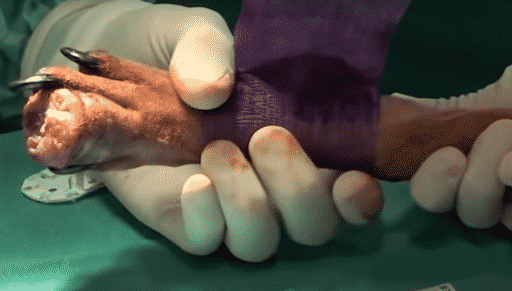
The Esmarch tourniquet is removed to allow normal arterial bleeding to occur. This is so haemostasis can be provided prior to closure of the incision.
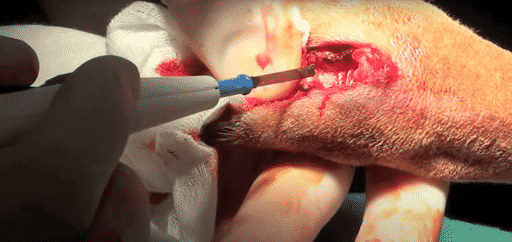
The connective tissue between the adjacent toes is closed using 3-0 PDS in a simple continuous pattern.
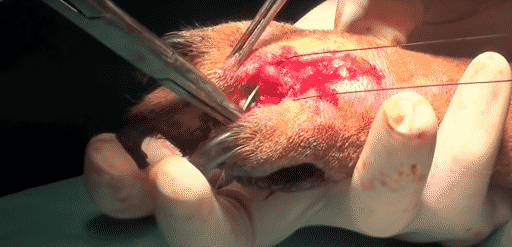
The skin is then closed in a simple continuous pattern with 3-0 PDS.
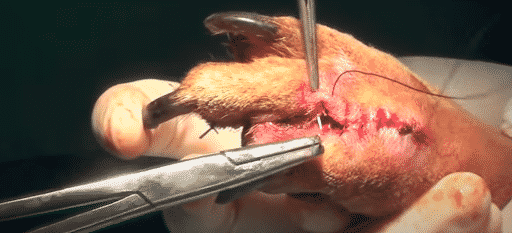
After this, a compressive bandage is put on for 24-hours, and is changed the day after surgery with a normal non-adherent soft padded bandage.
Vetdojo is a new e-learning platform which provides academic information distilled into the real world, practical skills that veterinarians can apply in a clinical setting.
Students have access to informative and educational surgical content, mentorship, and support plus ability to connect with a community of like-minded vets to share challenges and questions. To view the range of courses or start one today visit www.vetdojo.com

